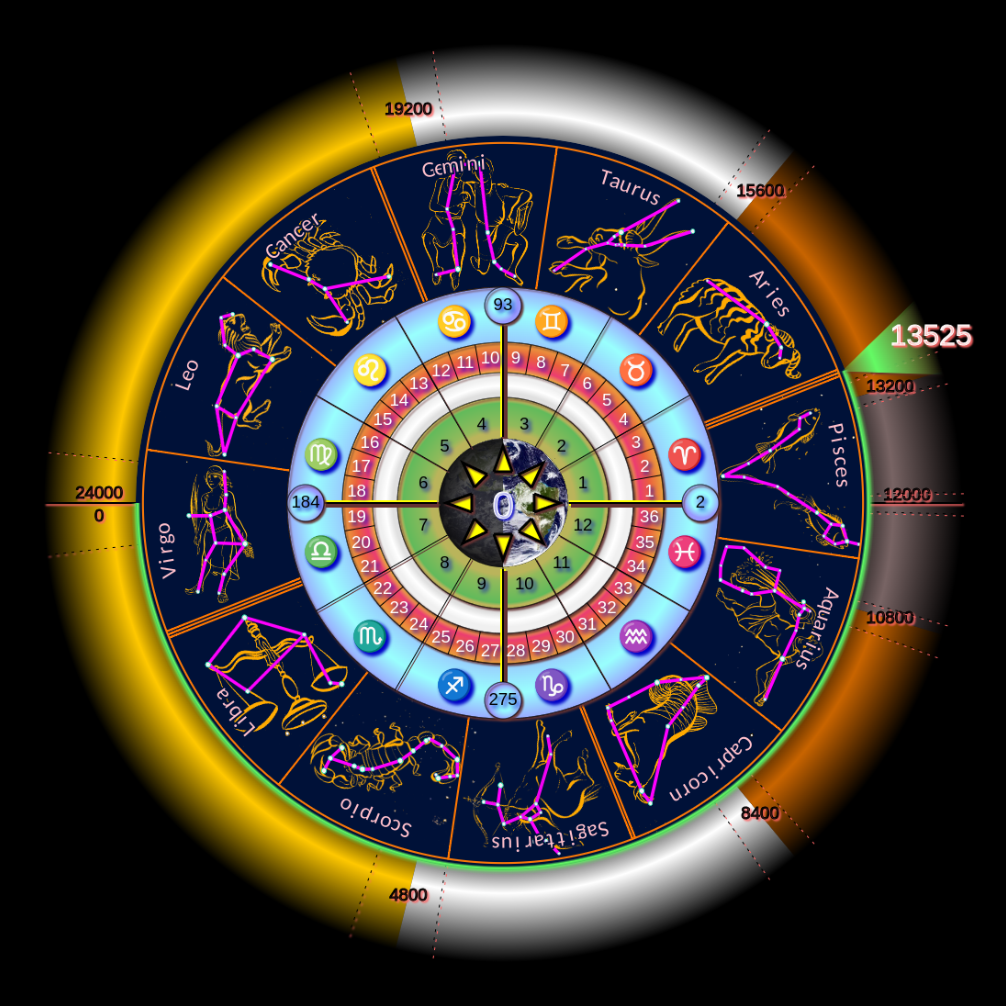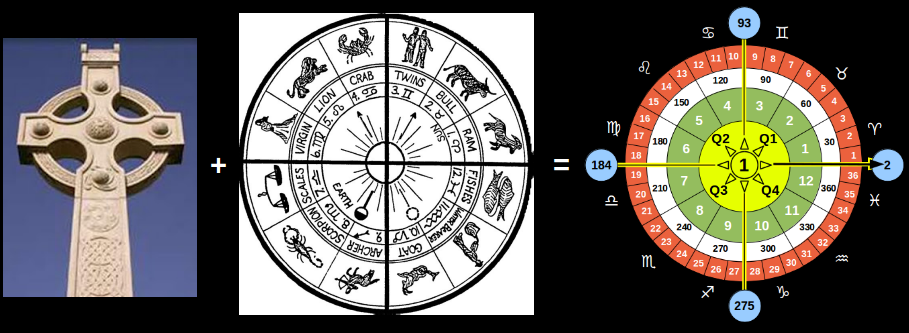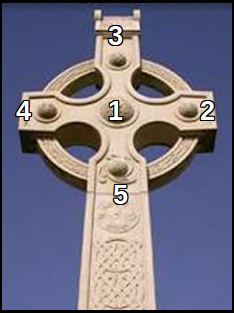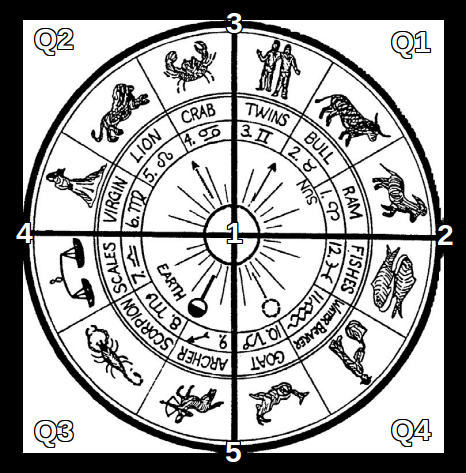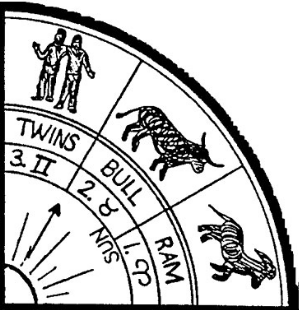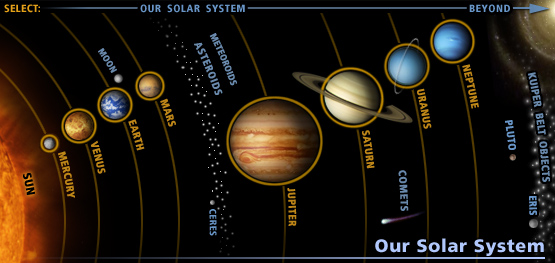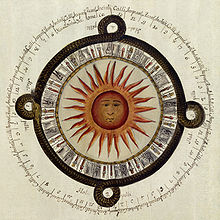Universal Celestial Calendar
About The UCC
The Universal Celestial Calendar (UCC) is derived from a combination of 2 main Ancient Symbols
The Solar Cross & The Zodiac Cross
The Solar Cross (left) + The Zodiac Cross (centre) = The UCC Year (right)
The Solar Cross
This is the ancient Solar Cross with its '4 around 1' configuration.This is also known as The Celtic Cross and can be seen at many many ancient sites around the planetThe symbols for the Earth '⊕' and the Sun '☉' can both be seen in the Solar CrossThe Solar Cross shows the orbit of the Earth around the Sun at point No.1 with its 2 Equinoxes & 2 SolsticesWe can number the 4 other points of the cross from a Northern Hemisphere perspective as follows:2 = The Spring Equinox3 = The Summer Solstice4 = The Autumn Equinox5 = The Winter SolsticeThis cycle is shown below with the 2 Solstices to the left and right
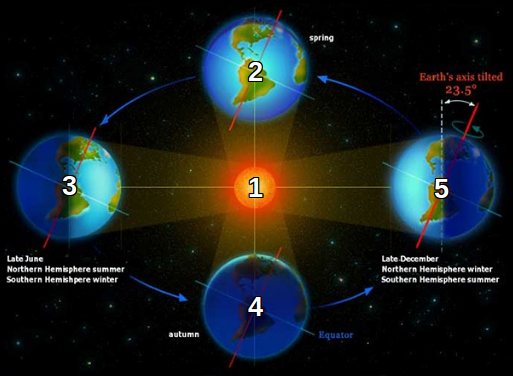
The Equinoxes & Solstices create the 4 Seasons
Together with the Sun at the centre they give us 5 Special Days each year (4+1=5)
And of course Earth's orbit is made up of 360° as in any circle
This gives us 360 Standard Days - One Day for each Degree of the orbit
360 Standard Days
PLUS
5 Special Days
Gives us 365 Days in a Standard (non Leap) Year
How Is A Standard UCC Year Divided Up?
To answer this let's look at the other Ancient Symbol
The Zodiac Cross
This is the Zodiac Cross which shows the 12 'Sun Signs' of Tropical Astrology with their symbols & glyphs
on the Solar Cross of the 4 Seasons: Q1 / Q2 / Q3 / Q4
and the positions of the 5 Special Days
8 Seasonal Festivals
The 4 Quarters/Seasons each have 2 Festivals:
A 'Cardinal' Festival to celebrate the Start of each Season with:
Aries♈ | Cancer♋ | Libra♎ | Capricorn♑
and
A Mid Season Festival to celebrate their Mid Points in the middle of:
Taurus♉ | Leo♌ | Scorpio♏ | Aquarius♒
The Sun Signs & 'Triads'
The 12 'Sun Signs' correspond closely to 'Triad' months in the 4 Quarters of the UCC
Q1 Q2 Q3 Q4 1. Aries♈ ('Ram') 4. Cancer♋ ('Crab') 7. Libra♎ ('Scales') 10. Capricorn♑ ('Sea Goat') 2. Taurus♉ ('Bull') 5. Leo♌ ('Lion') 8. Scorpio♏ ('Scorpion') 11. Aquarius♒ ('Water Bearer') 3. Gemini♊ ('Twins') 6. Virgo♍ ('Virgin') 9. Sagittarius♐ ('Archer') 12. Pisces♓ ('Fishes') The Western Tropical Zodiac of 'Sun Signs' is actually our Ancient Seasonal Calendar!
Their equivalent Zodiac Constellations are shown in (brackets) in the table
(For some interesting facts and images about the Zodiac Sign/Months and our Orbit see THIS BLOG)
These 12 Triads divide the 360° of the orbit and its 360 Standard Days into Twelve 30° Segments of 30 Standard Days
This gives us 12 'months' in the year each of exactly 30 Standard Days
What Is A 'Triad'?
Each Quarter/Season has 3 of the 12 Sun Sign 'months'
Each of these 'months' is also split into 3 equal sections (see 'Decans' below)
I call the 12 Sun Sign segments 'Triads' instead of 'months'
This is due to their '3 above' (3 Triads per Quarter) x '3 below' (3 Decans per Triad) nature
(Triad means 'group of three')
(The term 'month' is not really appropriate as it comes from 'Moon-th' and is based on the roughly 28/29 Day cycle of our Moon through the Zodiac)
Q1
As you can see the Zodiac starts with the Sign Aries 'The Ram' with its symbol '♈'
Aries♈ begins at the Northern Hemisphere Spring (Vernal) Equinox
This is actually still known as 'The 1st Point of Aries' in Astronomy
(circa March 20th/21st in the Gregorian Calendar)
So this is also when the UCC Year begins
Triad Names
The Triads are then named after their NUMBER in the Zodiac cycle plus its respective Sun Sign Name & Symbol:
ONE-Aries♈, TWO-Taurus♉, THREE-Gemini♊ and so on...
Either the Number or the Symbol can then be used as an abbreviation for the Triad in question:
1 or ♈ , 2 or ♉ , 3 or ♊ etc.
To learn more about how the UCC Triads work and relate to the Zodiac in astronomy and astrology take a look at the page for the First Triad 'ONE-Aries♈'
How Are The Triad 'Months' Divided Up?
The answer to this is based on the structure of our Solar System
As you can see there are 10 main elements in our Solar System
These are The Sun at the centre and the 9 Major Orbits of:
Mercury
Venus
Earth (with its Moon)
Mars
The Asteroid Belt (with its main orb Ceres)
Jupiter
Saturn
Uranus
Neptune
The Gregorian Calendar has a 7 Day Week based on a day for each of the orbs visible from Earth with the naked eye;
Sun, Moon, Mercury, Venus, Mars, Jupiter & Saturn
But does not include The Asteroid Belt, Uranus or Neptune
What Is A 'Decan'?
The UCC has a 10 Day Week called a 'Decan'
This has 1 Standard Day for each of the 10 main elements of the Solar System
Decan means 'group of ten'
There are 3 of these Decans in each Triad making up its 30 Standard Days
And so there are 36 Decans in the UCC Year (36 x 10 Standard Days = 360 Standard Days)
Therefore the Calendar is very easy to use as EVERY Triad looks exactly the same with its 3 Decans:
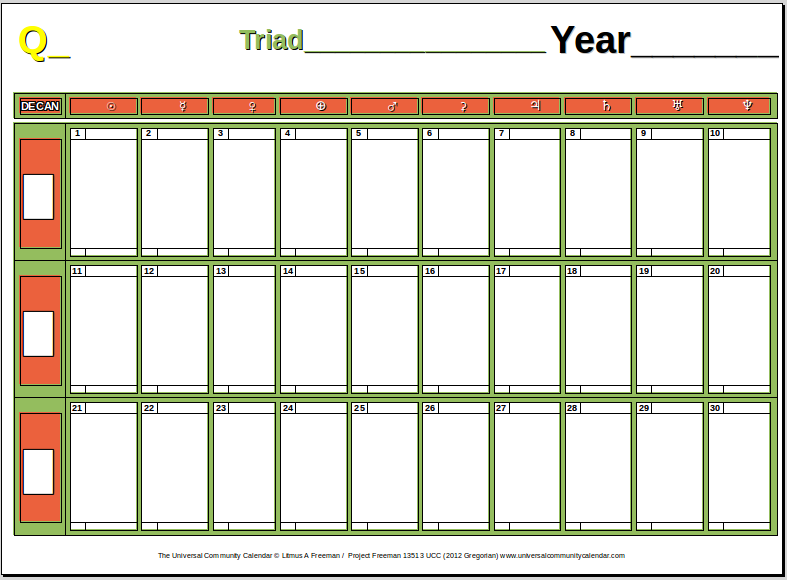
[The Symbols above each Day are those of The Sun and the Planets of its 9 major orbits]
12 of these Triads make up the 360 Standard Days of the year
We can use the same template for EVERY Triad 'month' of the year
And it's EASY to figure out the number of days between two dates as EVERY Triad has the same 30 Day structure
The UCC Year
So, the combination of the 5 Special Days of the Solar Cross
PLUS
the 360 Standard Days of the Zodiac Cross
produces the following Calendar Year graphic:
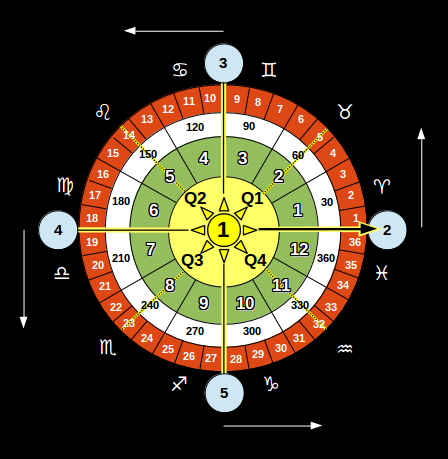
This shows
The 4 x 90 Day 'Quarters' (Seasons) in Yellow
The 12 x 30 Day 'Triads' in Green
The 360 Standard Days in White
The 36 x 10 Day 'Decans' in Red
The Zodiac symbols are also shown around the edge
These can be used as abbreviations for the names of our 12 Triads
What Are 'Intercalary' Days?
The 5 Special 'Intercalary' Days of the Solar Cross are shown on the above graphic
These are:
Day No.1 in the centre in Yellow for The Sun
Days 2, 3, 4 & 5 in Blue around the edge for the Equinoxes & Solstice which start each Quarter/Season
They are called 'Intercalary' Days meaning 'days out of the standard calendar cycle'
So we pause for a day at these points before commencing the next Triad & Quarter/Season
The Special Intercalary Days 'Balance' the UCC Year into its 4 'Geometrical' Quarters of exactly 90 Standard Days each
(The 'Natural' seasons are slightly different lengths due to the Earth's elliptical orbit)
How Do Leap Years Work?
The UCC uses a system of 8 Leap Years in a 33 Year cycle
In Leap Years an additional (6th) Intercalary Day is inserted at the start of the year as 'Day Zero'
This keeps the day numbers the same for both Standard (Non Leap) Years AND Leap Years
Click here for full details about the Leap Year system
Symbolic Ancient Synchronicity?
Having developed the UCC I later came across this archaic 'Mexican' Calendar on Wikipedia
I took this as a good sign that I was on the right track!
Rather than creating something new I feel that I have merely rediscovered some forgotten ancient knowledge...
For much more detail, including how the UCC year numbering system works, please visit the
Home
© Universal Celestial Calendar 13512 UCC (2012 Gregorian) Onwards
